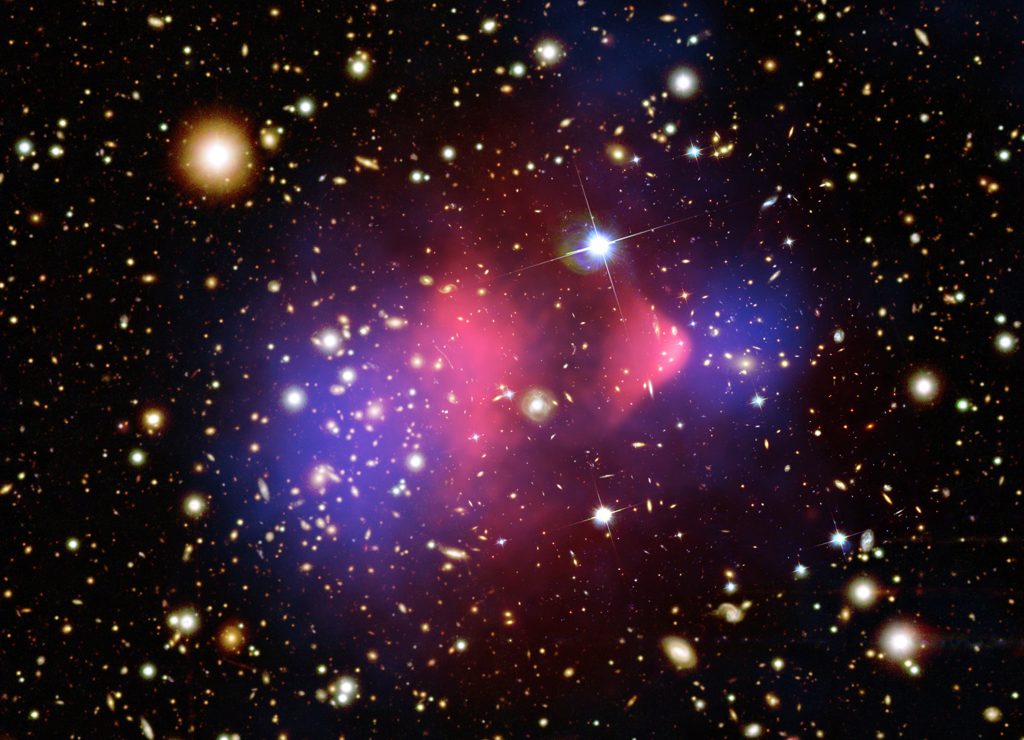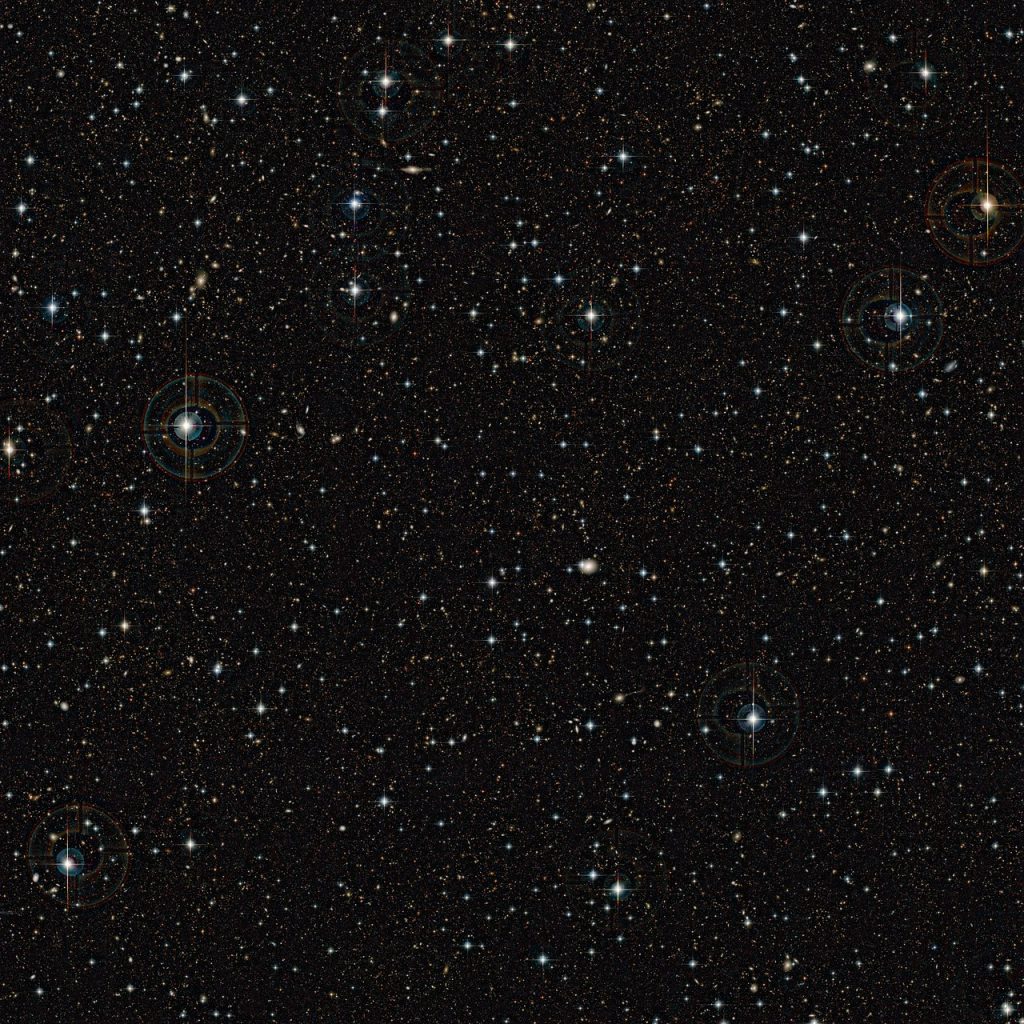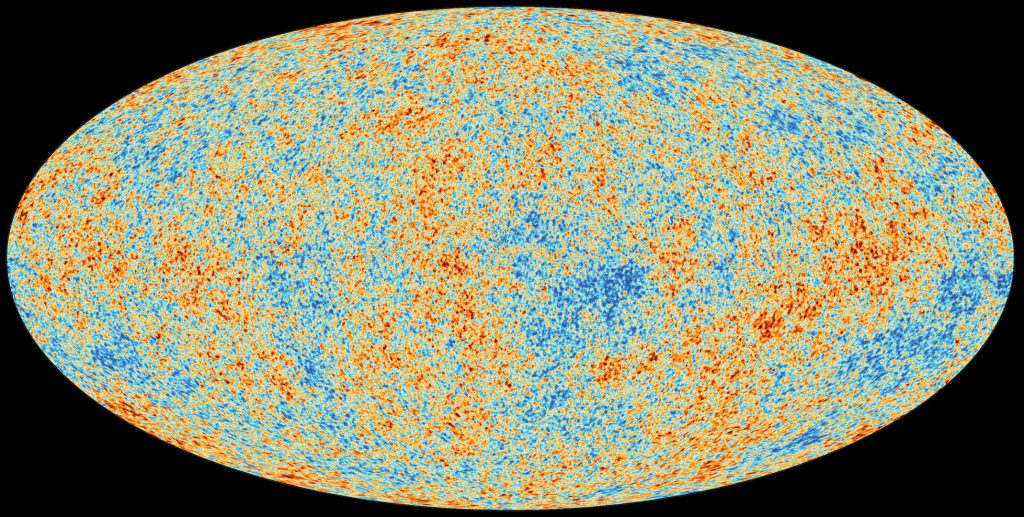Astrojukebox
The sound you are listening to is a sonification of an image of the Bullet Cluster, whose light took 3.8 billion years to reach our telescopes.
It formed from the collision of two smaller clusters. During this collision, the very hot plasma that pervades the space between the galaxies and that can be observed in X-rays was stripped away by the interaction with the invisible dark matter.
The sound was created by scanning the image vertically, from left to right. Each component was assigned a different tone: dark matter corresponds to lower tones, galaxies to intermediate tones, and hot plasma to higher tones.
Within each level, the tone increases from top to bottom of the image (sources at the top correspond to higher tones).
Credits: NASA/CXC/SAO/K. Arcand, SYSTEM Sounds (M. Russo, A. Santaguida)

The sound you are hearing is a sonification of observations of around eight thousand distant galaxies, made with ESO’s Very Large Telescope in Chile as part of the z-COSMOS project.
These galaxies are located at increasing distances, going back in time to around 7.6 billion years ago.
Each sound represents a galaxy. Low-pitch sounds represent galaxies with larger mass, whereas high-pitch sounds represent galaxies with smaller mass. Shorter sounds represent older galaxies and longer sounds represent younger galaxies. Softer sounds represent dimmer galaxies and loud sounds represent brighter galaxies.
The sounds heard at the beginning refer to galaxies that are closer to us, while the sounds heard further away refer to galaxies that are increasingly distant, belonging to the distant past of the Universe.
In addition to the sounds of each galaxy, there is a background effect that evolves according to the overall characteristics of all galaxies at a given moment.
The background becomes increasingly louder, signifying the growing uncertainty in the observation of increasingly distant galaxies. The extreme limit of this journey is reached when only the background noise is heard.
Credits: zCOSMOS Survey (ESO/VLT/VIMOS); S. Bardelli (INAF), C. Ferretti (sound artist), M. Rinaldi (sound artist), G. Presti (sound artist – Laboratorio di Informatica Musicale dell’Università degli Studi di Milano)

The sound you are listening to is a sonification of the cosmic microwave background, the oldest light in the history of the Universe, created around 13.7 billion years ago.
The cosmic microwave background radiation contains very small temperature fluctuations, which reflect tiny ripples in the density of matter in the early universe: this sound was obtained by transforming the temperature fluctuations observed in microwaves into sounds audible to the human ear.
The pitch indicates the scale in the sky on which different fluctuations are measured (larger scales correspond to lower sounds, smaller scales to higher sounds) while the volume indicates how often the fluctuations occur on the different scales.
The fluctuations of the cosmic microwave background radiation depend on a series of “cosmological parameters”, in particular on the relative quantities of the three main components of the Universe: ordinary matter, dark matter and dark energy.
This sonification shows how, by varying these three parameters, a different distribution of fluctuations is obtained and therefore a different sound.
Credits: J. van der Veen (CMB Power Spectrum Models); R. McGee (Sonification)







